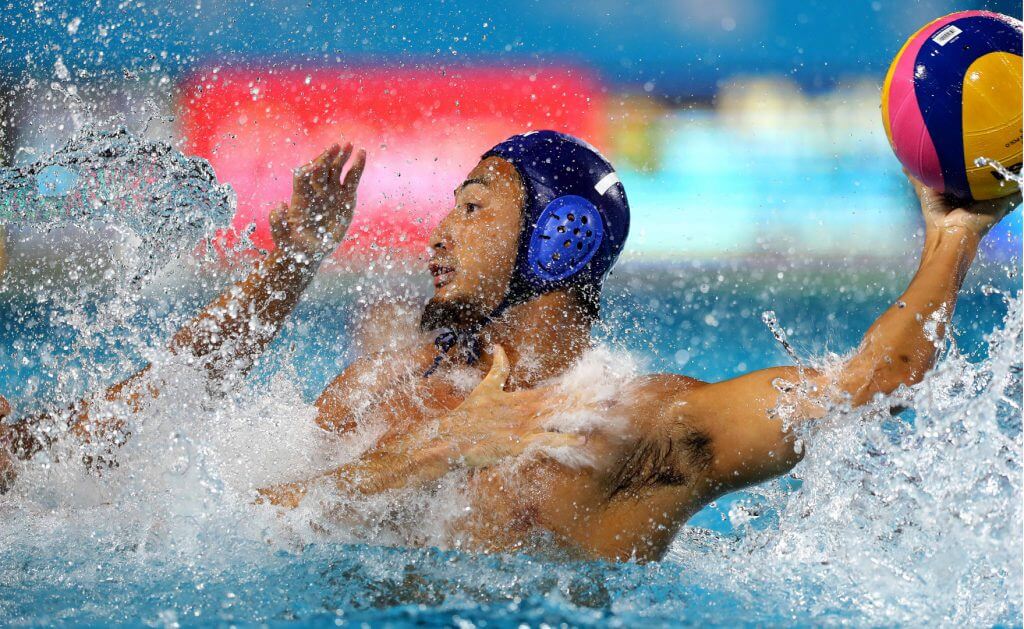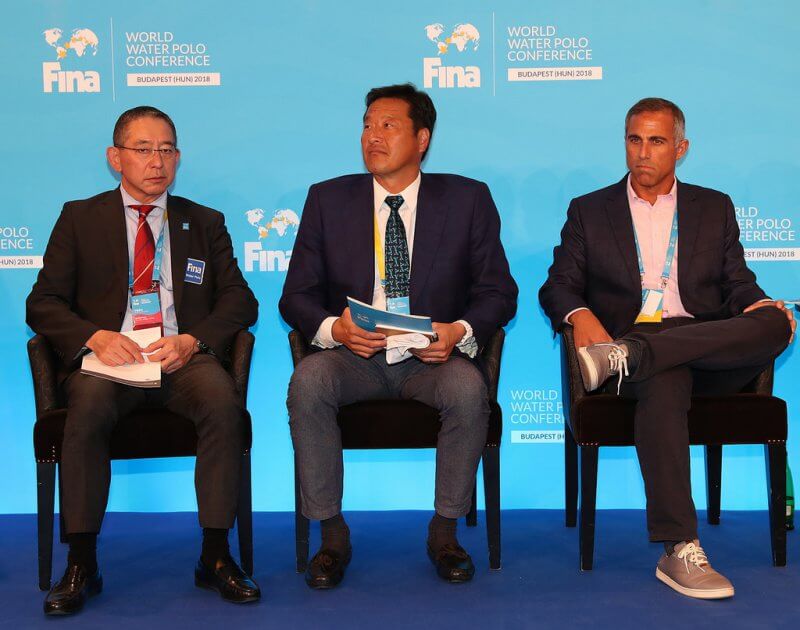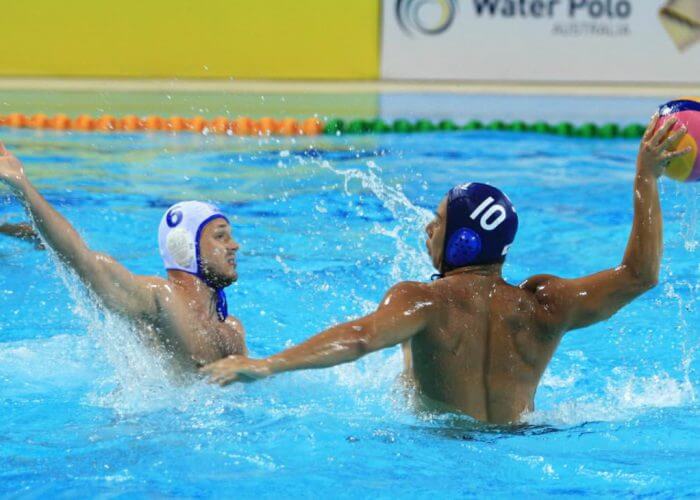On The Record With Yoji Omoto, Head Coach for the Japanese Men’s Water Polo Team

By Michael Randazzo, Swimming World Contributor
BERLIN, Germany. If there’s one match that stands out as a critical data point regarding the status of the current U.S. Men’s Senior National Team, it’s when Team USA faced Japan in group play at the 2017 FINA World Water Polo Championships. As every American polo fan knows, the Japanese dealt the Americans a devastating 15-7 loss—the first time they had ever beaten the U.S.

And then they did it again. Last June, also in Budapest, the Japanese claimed a narrow 11-10 quarterfinal win in a FINA Men’s Water Polo World League Super Final that denied the Americans a spot in the medal round.
The program’s stunning turn-about is a result of efforts by Japan Head Coach Yoji Omoto to change his team’s style of play to better conform to his player’s strengths—and in the process to perhaps transform how water polo is played throughout the world. Clearly, his team—which qualified for its first Olympics in 32 years when the Japanese attended the 2016 Rio Games, finishing 12th—is making its mark on the sport.
Tall and easy-going off the pool deck, Omoto is entirely focused on his team during matches, and their style of play, which features a pressing defense, constant motion for all players and driving the ball from either side of the pool, giving teams fits, reflects his drive for perfection.
In a recent article in Waterpology, Dante Dettamanti described the Japanese style of water polo as one that fits the smaller, quicker and faster players that Omoto has available for his roster.
“To take advantage of the speed and agility of his players, he devised a high press style defense that would lead to counterattack after counterattack, an aggressive driving attack in front of the goal, and a conditioning program that would promote the speed of his players and wear down their bigger opponents,” wrote Dettamanti, a highly decorated U.S. college coach who won eight NCAA Championships during 25 years as head coach of the Stanford men’s team.

Ken Kuroda, Yoji Omoto, Adam Krikorian. Photo Courtesy: FINA
Swimming World spoke with Omoto and his interpreter, Ken Kuroda on the pool deck of the Europasportpark Swimming Hall during the FINA Men’s Water Polo World Cup 2018, where they described how Japan is climbing the ranks of international water and why hosting the 2020 Olympic Games is potentially a double edged sword for Japanese polo.
– What is the status of the rivalry between the U.S. and Japan?
As you know in the World League Intercontinental Cup, we are always together with the U.S. And the U.S. always used to be the best at the Intercontinental, but we beat them in Budapest last year, and we’ve been getting more and more confident. We think we have reached the U.S. level, and sometimes we can beat them.
Benchmarking the U.S., we think we are in a good cycle. Now, we think we can look into a little higher stage.
As you are well aware, our players are not so big, so the tactic we have to employ is to keep moving, moving. So, in that sense, we play a high-risk kind of water polo.
Sometimes we beat the U.S. marginally and sometimes we lost with a low margin. Maybe our style of water polo appears to be much more interesting or attractive than traditional water polo.
– There is a divide between teams from the Balkan countries, who have big, strong players and exploit a strong center, and everybody else. With some of the best swimmers in the world, the Americans play a style developed by the Yugoslavians rather than a more fluid, counter-attacking approach.
U.S. players are still a little smaller than the Serbians. At the same time they’re bigger than us. So their basic play style should be counter-attack and keep swimming. They don’t have as strong center forward as the Serbians.
The difference between the U.S. and Japan [is] they still have the big center back and 2M defender. That is a main difference between our teams. We don’t have the big center defender, so that is why we have to employ a[ pressing, aggressive] kind of defense.
At the same time, under Dejan Udovicic, U.S. has employed some of the Serbian tactics. At the game yesterday, Japan was winning in the first half against Serbia. We have been learning little by little so that we can cope with those big teams.
– Japan has made strides to improve their results among the world’s best teams. How does your team continue to progress and achieve better results against international competition?
Since this defensive tactic is unprecedented, we are always going to try and [improve]. As a matter of fact, we have always been better on the second day than the first day, and third day than the second day.
Therefore we will keep trying to find out what we can do better.

Kohei Inaba. Photo Courtesy: FINA
Our weak point is sometime we yield a couple of goals in a row. That we have to avoid by any means. For that purpose we have to keep building our experience. We are trying to stay as long as possible in Europe—the entire team or part of the team. That way we can gain more experience.
– How have the new rules affected your team’s play at this tournament?
The principle when I made that statement in Budapest at the world water polo conference, my point of view is to keep enhancing and motivating fair play, so in that respect these new rules are good.
In this tournament there have been some good calls but still, sometimes in the middle of the tournament we have come back to the old-fashioned style of play. We have to keep trying to improve under the leadership of FINA.
In that respect, not only referees but also coaches and players, have to try and change their minds and not keep supplying the ball into the center forward.
If the ball keeps going around [the perimeter] that’s more attractive, I think. That kind of fast style of polo could be a benefit of every country.
– How much impact will hosting the 2020 Olympic Games have on growing polo in Japan?
Unfortunately water polo is not such a popular sport in Japan. But, we drew some attention when we appeared in Rio after 32 years of absence. Naturally, in 2020, we will be more focused. If our performance is very poor in Tokyo, there is a risk that water polo popularity and attraction will go down again.
Therefore we have to be better and we have to be still competitive there.
We hope to make water polo as major as possible in Japan. This is a big task.




.png)
Oh!